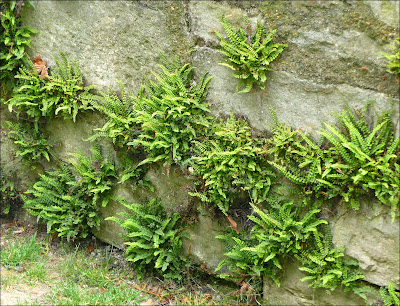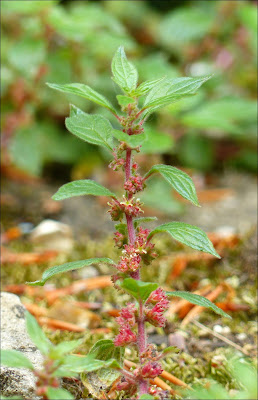But we didn't really enjoy ourselves, so on Monday (Bank Holiday) we returned to well-trodden Territory viz. we started at the small Lake beside Church Manorway and immediately spotted the Mallard family viz.
There are five children and they are essentially left to their own devices: Mama being seemingly indifferent to them. Very unlike the Coots who also have a family and take their Parental Duties very seriously; so much so that they were at Battle Stations with a wandering Moorhen.
We then walked up the new Footpath (beside the Lake) connecting Church Manorway with Bronze Age Way, returning to our starting Point via Crabtree Manorway North and Mulberry Way.
Flowering Plants seen included:
Annual Beard Grass (included in the Kent are Plant Register)
Bird's-Foot-Trefoil viz.
Black Horehound viz.
Bladder Campion viz.
Celery-Leaved Buttercup
Common Knapweed viz.
Common Mallow
Common Stork's-Bill
Common Spike-Rush (we know very little about Rushes &c. but have seen this growing on the former Thamesmead Golf Course)
Creeping Thistle
Goat's-Rue
Greater Celandine (growing beside the nearby Callender's Cables and Construction Co. Ltd.', War Memorial)
Green Alkanet
Hairy Tare
Hedge Woundwort viz.
(assumed) Lucerne aka Alfalfa viz.
Melilot viz.
Narrow-Leaved Ragwort
Oxeye Daisy
Red Campion
Red Clover
Spear Thistle
(assumed) Welted Thistle viz.
White Campion
White Clover
Wild Mignonette viz.
Yarrow viz.
Yellow Iris viz.
and Yellow Rattle
We also noticed (although not yet flowering):
Amphibious Bistort
and Water Plantain
Butterflies seen included:
Common Blue Butterflies viz.
Holly Blue Butterflies viz.
a Peacock Butterfly viz.
and a Small Tortoiseshell Butterfly viz.
We were also pleased to see a Burnet Companion Moth and other Little Critters (Bees &c.) viz.
Before going Home we went Shopping in Erith. Parking the Car beside the Erith Deep Water Wharf we looked over the nearby pleasingly Overgrown Flower Beds. Black Horehound, Black Medick, Common Mallow, (we think) Perforate St John's-Wort viz.
and Wild Mignonette were flowering and Wow, a couple of Common Blue Butterflies were in Permanent/Temporary Residence!
Far more enjoyable than the previous days visit to Darland Banks.
















































